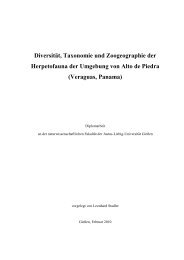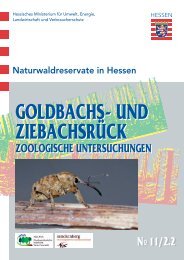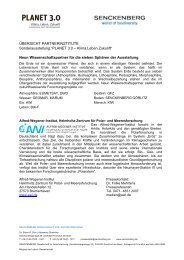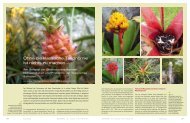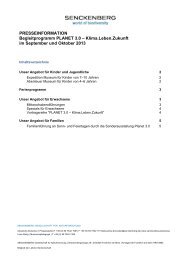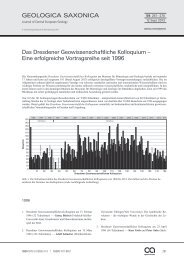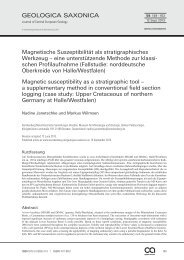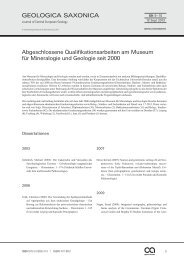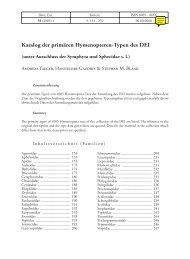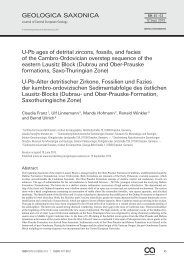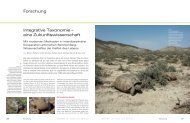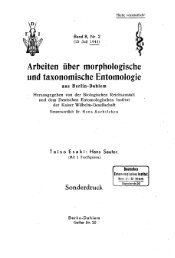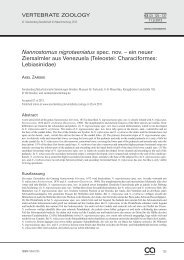Taxonomic publications: past and future - Senckenberg Museum
Taxonomic publications: past and future - Senckenberg Museum
Taxonomic publications: past and future - Senckenberg Museum
Create successful ePaper yourself
Turn your PDF publications into a flip-book with our unique Google optimized e-Paper software.
Burckhardt & Mühlethaler (eds): 8 th GfBS Annual Conference Abstracts 18<br />
DNA barcoding in the fungal world<br />
D. Begerow & M. Lutz<br />
Research of the last decade has shown that biodiversity of microorganisms has been<br />
underestimated dramatically so far. This can be demonstrated by many examples for<br />
fungi. The upcoming questions are illustrated for the fungal world. Finally we discuss<br />
the <strong>future</strong> needs of DNA barcoding.<br />
Most fungi have at least two different life stages, namely the anamorph <strong>and</strong> the<br />
teleomorph. Often these two life stages exhibit quite different characteristics <strong>and</strong> it is<br />
thus difficult to reveal the unity of the respective fungi. E.g., the anamorphic yeast<br />
stages of smut fungi can be isolated from many different habitats. However, the<br />
morphological characters, which are necessary for identification <strong>and</strong> phylogenetic<br />
placement of these smuts are expressed only in the parasitic teleomorphic stage.<br />
The use of DNA sequence data revealed unexpected ecological <strong>and</strong> phylogenetical<br />
aspects of smut fungi <strong>and</strong> improved our knowledge of Ustilaginomycetes.<br />
Molecular analyses <strong>and</strong> infection experiments revealed the tripartite life-cycle of<br />
Tuberculina-Thanatophytum-Helicobasidium. Molecular typification of different<br />
isolates in combination with infection experiments demonstrated the hidden diversity<br />
within this exceptional mycoparasitic-phytoparasitic fungal group.<br />
The use of sequence data for biodiversity studies in Microbotryum showed<br />
unexpected diversity within the genus. Phylogenetic analyses in combination with<br />
ecological data allows a new interpretation of smut evolution. Based on the new data,<br />
hypotheses on characters, which are relevant for dispersal, the infection process <strong>and</strong><br />
the interaction with host plants are discussed.<br />
The use of st<strong>and</strong>ardised DNA regions <strong>and</strong> procedures will help to discuss questions<br />
related to diversity of microorganisms on a rapidly increasing database. For the<br />
fungal world nuclear SSU, LSU <strong>and</strong> ITS regions became st<strong>and</strong>ard <strong>and</strong> should be at<br />
least part of <strong>future</strong> plans.<br />
Org. Divers. Evol. 5, Electr. Suppl. 13 (2005)



